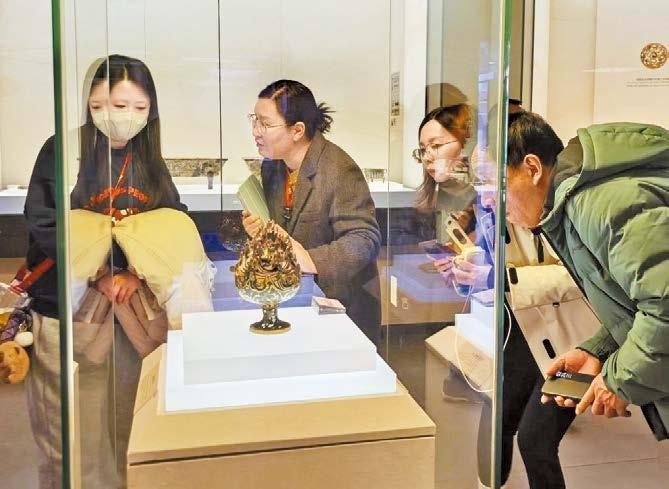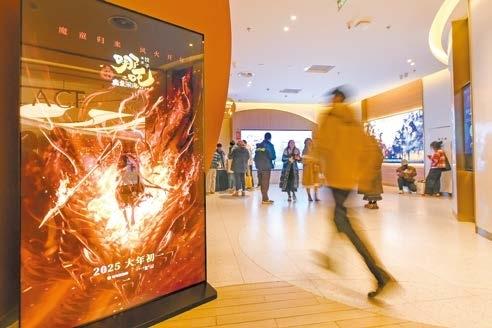

CHINA’S animated hit “Ne Zha 2,” while captivating global audiences, has also inspired renewed interest in Chinese museum artifacts among viewers. Through repeat viewings, its zealous fans have propelled this movie to the top of the global animation box office and also uncovered its intricate Chinese cultural references, prompting them to visit museums nationwide in search of its sources of historical inspiration. At Hebei Museum in Shijiazhuang, Hebei Province, crowds gather around a 2,000-year-old gilt-bronze incense burner, known as the Boshan censer, which is believed to have inspired the design of the seven-colored lotus, a multi-layered lotus root that reconstructs the bodies of the protagonists, Ne Zha and Ao Bing, in the movie. “I come here specifically after watching the film. The exquisite designs make the story feel rooted in real history,” said Geng Shuo, a local resident. Since the recent Spring Festival, when the movie hit the screen, the museum has recorded 340,000 visits — with up to 15,000 daily visits on weekends. “Many visitors asked about ‘Ne Zha 2’ connections during their tours,” said Yao Ying, a museum guide, adding that she uses these moments to unpack details of the Boshan censer’s craftsmanship and artistic beauty. Fans have also found similarities between some movie elements and museum collections, such as the dragon king Ao Guang’s blade and the sword of Ne Zha’s mother Lady Yin, which resemble a Shang Dynasty (1600-1046 B.C.) jade weapon in the Yinxu Museum in central China’s Henan Province and the 2,500-year-old sword of the legendary king Goujian in the Hubei Provincial Museum in central China, respectively. The movie’s director Yang Yu, known as Jiaozi, said movie creations are rooted in the soil from which they emerge, and while producing the film, the production team absorbed the essence of much traditional Chinese culture. A typical example is the barrier beasts — comical figures serving as guardians. Their designs were inspired by artifacts unearthed at the ruins of Sanxingdui and Jinsha in Southwest China’s Sichuan Province, according to Liu Wenzhang, producer of the movie. Zhu Yarong, deputy curator of the Sanxingdui Museum, said the ingenious design of the barrier beasts aligns well with Sanxingdui items such as the gold-masked bronze head, the large bronze mask and the bronze eagle-shaped bell. Through movies and TV plays, the historical significance, cultural essence and contemporary value of cultural relics become more accessible to the public, which helps further inherit and promote fine traditional Chinese culture, said Wang Ran, deputy curator of Hebei Museum. “In the future, we will further explore the cultural essence of relics and bring them to life through diverse forms,” said Wang.(Xinhua) | 
